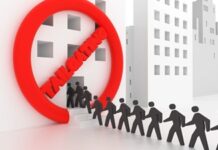
Technology developments are enabling a range of new functionality for biometrics in the security market. Early biometrics solutions had poor performance (high failures during enrolment or acquisition that meant significant percentages of users could not use biometrics), Early solutions were not able to distinguish live fingerprints from fakes, thus stoking fears that we face a new and more dangerous form of identity theft if someone can steal and use a digital version of person’s unique biometric says Phil Scarfo, VP worldwide marketing, biometrics, HID Global.
Today’s technology is much improved compared to earlier generations. For instance, HID Global’s Lumidigm biometric sensors with multispectral imaging technology increase performance through improved fingerprint data collection, can identify real human tissue as authentic and detect fraudulent materials within a fraction of a second. The latter, liveness detection capability is built from advanced machine learning algorithms, and its spoof-detection algorithms can be updated as new threats and spoofs are identified, enabling the sensors to very quickly respond and adapt to new vulnerabilities.
Unlike any other fingerprint technology, this “learning” capability allows Lumidigm fingerprint sensors to keep up with new threats. Additionally, HID Global’s Lumidigm biometrics solutions are increasingly being deployed using intelligent encryption-enabled and tamper-resistant devices that further strengthen secure authentication and protect user privacy.
Important biometric capabilities are multispectral imaging, which improves performance by collecting more relevant fingerprint data than other technologies, and superior liveness detection. Another important development at HID Biometrics is biometric devices that are encryption-enabled with various tamper resistance and detection capabilities that protect the integrity of the sensor as well as communication between the client and the sensor.
These devices can increase security for banking and other sensitive applications by connecting to the institution’s systems through a cryptographically secure channel protected by hardware tamper detection and response, which establishes trust between the device and the institution’s systems independent of intermediate systems and networks. Half of all deployments of the company’s biometric solutions use this increasingly popular biometric systems architecture, and more are sure to follow. Some of these customers have even taken advantage of this architecture and Lumidigm liveness detection technology to enable secure self-enrolment at the ATM, since spoofs are checked with every finger placement.
HID Global’s latest biometrics solution is the V371 reader – the first HID Global offering to integrate Lumidigm technology. It combines the company’s high-performance biometrics sensors with its contactless reader technology to simplify identity verification while improving fraud protection compared to other card-and-fingerprint readers. Other anti-counterfeit methods have been used to combat card fraud, but only the V371 ensures authenticated users are the same people that were issued the cards.
More means of authentication, better security.
With ZKTeco, authorised users can gain door access without having to carry on their person a physical credential or memorise a PIN code (either of which can be lost, forgotten or stolen). Another new introduction is ZKTeco’s access control camera model BioCam. BioCam can release a door lock upon recognising an authorized user’s face up to 12 feet away. As with MB700, FV350 and most all ZKTeco access control models, BioCam is completely standalone. It does not require a computer for programming or a separate access controller. In most cases, ZKTeco models (including BioCam) require only an electric door lock and power (option to connect ZKTeco or third party panel via Wiegand.











